I got into problem to solve matrix grouping problem based on its relation.
Problem
Consider a group of people giving books to each other. More formally, group is composed of all the people who know one another, whether directly to transitively.
Example
Consider a matrix of input M
Input
1100
1110
0110
0001
Output:
2
- There are n = 4 people numbered related[0] through related[3].
- There are 2 pairs who directly know each other: (related[0], related[1]) and (related[1], related[2]). Because a relation is transitive, the set of people {related[0], related[1], related[2]} is considered a single group.
- The remaining person, related[3], does not know any other people and is a separate group: {related[3]}
- There are a total of 2 groups.
Example
Input:
10000
01000
00100
00010
00001
Output:
5
No direct relationship are shown so there are 5 groups: {related [0], related[1], related[2], related[3], related[4]}
Example
Input
1100000
1110000
0110000
0001000
0000110
0000110
0000001
Output
4
- There are 2 pairs who directly know each other: (related[0], related[1]) and (related[1], related[2]). Because a relation is transitive, the set of people {related[0], related[1], related[2]} is considered a single group.
- There is 1 pair who directly know each other: (related[4], related[5]). So they are considered as single group {related[4], related[5]}
- The remaining person, related[3], related[6] does not know any other people and is a separate group: {related[3]}, {related[6]}
- There are total 4 group : {{related[0], related[1], related[2]}, {related[4], related[5]}, {related[3]}, {related[6]} }
I need help with how to approach with this kind of problems.
Code (I tried not completed)
def countGroup(matrix):
people = set()
group1 = set()
for i in range(len(matrix)):
people.add(i)
for j in range(len(matrix)):
if i == j:
# next
continue
if matrix[i][j]:
group1.add((i,j))
people.discard(i)
people.discard(j)
# group1.add(i)
# group1.add(j)
print(people, "people")
print(group1, "group1")
count = len(people)
if group1:
count += 1
return count
